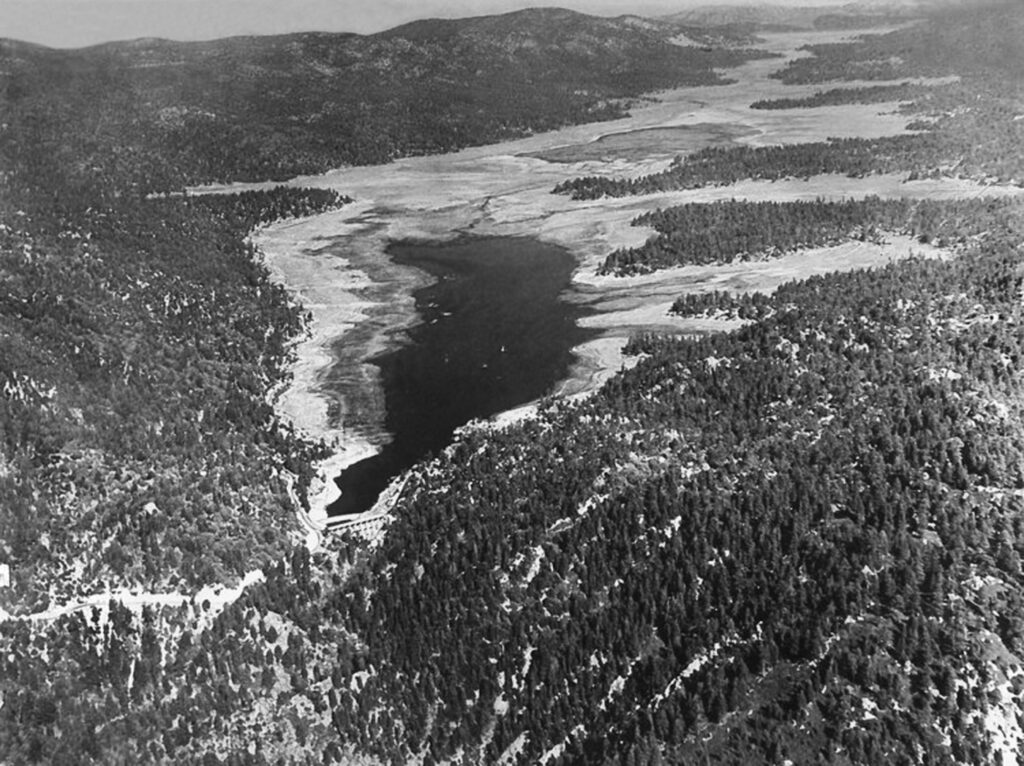
California’s status as the most populous state in the U.S., and as a major supplier of the country’s agricultural products draws national and worldwide attention when a drought affects the region.
A look back at the earliest days of record-keeping in California shows the Golden State is often the parched state, with residents suffering through prolonged periods of drought, that are often followed by record-breaking rain, snow, and flooding.
Droughts and their severity don’t have a universal definition, but the National Oceanic and Atmospheric Administration provides a general definition as “a deficiency of precipitation over an extended period of time (usually a season or more), resulting in a water shortage.”
With few or no weather records available, California’s early settlers often made the mistake of assuming the wet years they arrived in would be consistent, and suitable for agriculture. An example of this is the cattle rancho system that saw a rapid decline with the onset of the great drought of 1863-64.
California’s native population was experienced with regional droughts, and tribes that lived in areas with fluctuating rainfall and resources were adept at simply moving to the water and resources.
When the Salt Lake Mormons were scouting Southern California in 1851 for a new settlement location, they found the San Bernardino Valley to have an abundance of water, and to be well suited for agriculture.
Historian Leo Lyman commented on the wet environment in his book about the Mormon settlement “San Bernardino, The Rise and Fall of a California Community.” He wrote:
Read more
Half the country is in drought, and no region has been spared
Some Southern California cities to ban outdoor watering for two weeks
Here’s how low California’s reservoirs are and what to expect in the future
Build more houses! Use less water! California, can you have it both ways?
“If anything, the San Bernardino Valley was over-endowed with water. The area north of present-day Baseline, particularly between A and D streets, had such a high water level that ponds were visible amid the tule swamplands and dense willow thickets.”
By 1856, the Mormon settlement was experiencing their first California drought, and the residents had to build extensive new infrastructure to supply enough water to irrigate crops. This drought lasted until 1859, and in 1861, California was experiencing another dry year.
In December 1861, the first in a series of torrential storms slammed into California, and the ensuing downpours produced the largest flood in the state’s recorded history.
Estimates from the USGS show this series of storms produced precipitation in many places that exceeded levels experienced on average only once every 500 to 1,000 years.
Huge portions of California’s Central Valley became an inland sea, covering an area about 300 miles long, by about 20 miles wide, with depths up to 30 feet.
In the early 1880s, citrus farming began to expand rapidly across the San Bernardino Valley, and local developer Frank E. Brown came up with a plan to capture water in the nearby San Bernardino Mountains for irrigation.
Brown and his investors completed the dam at Bear Valley in 1884, and Big Bear Lake soon became a bellwether of drought conditions in Southern California. The reservoir behind the dam was filled, but by 1899, a drought and increased irrigation had depleted the lake to a puddle, a phenomenon that would play out again in other major droughts.
According to Redlands historian Tom Atchley, the farmers migrating to California were not prepared for prolonged droughts, “Farmers coming from the East Coast believed that rainfall here would be slightly less than in the east, but it would still be enough to support their crops. They were beside themselves when Big Bear Lake dried up in 1899.”
The drought of 1924 brought widespread devastation across the state, and it generated serious interest in irrigation, and investment in bonds to build large infrastructure to transport and store water.
The great Dust Bowl era lasted from 1930 to 1940, and had a devastating impact on much of the country.
The Dust Bowl drove Californians to begin making extraordinary investments in water infrastructure, including the Central Valley Project. This project brought water from Northern California to the parched San Joaquin Valley via a complex system of reservoirs and aqueducts.
In April 1931, San Bernardino Valley growers and the Bear Valley Chamber of Commerce were so worried about the drought and the water level in Big Bear Lake, they tried to hire a “rainmaker” to create precipitation to fill the lake and save their crops.
Charles Hatfield of Glendale, was a well-known rainmaker, and he claimed credit for bringing a deluge to fill a San Diego reservoir in 1916. Hatfield’s fee was $10,000, which would be paid if his efforts raised Big Bear Lake’s water level from 62 feet to 72 feet by May 31, 1933.
Hatfield’s method to create rain was to build a series of wooden towers where he would burn a secret concoction of chemicals that he said caused rain clouds to form, and eventually bring rain. The community didn’t raise enough funds to pay Hatfield, and he went back to selling sewing machines in Glendale.
The Great Flood of 1938 brought a temporary end to the drought in California, bringing torrential downpours and destructive flooding across the southern part of the state.
The state endured serious droughts in the 1950s that contributed to the creation of the State Water Project.
Another major drought in 1976 and the following year, 1977, is the driest year in the state’s history to date.
In 1980, scientists discovered the influence of climate patterns across the tropical Pacific Ocean known as the El Niño-Southern Oscillation, that have a significant effect on drought cycles.
The drought of 1986 to 1992 was one of California’s longest dry spells, and much of the U.S. was also affected. The eruption of Mount Pinatubo in 1991, and a significant El Niño event in 1992 brought persistent heavy rains.
Prolonged droughts also occurred from 2007 to 2009 and 2011 to 2017.
Once again, California is in a drought.
The first four months of 2022 were the driest on record, and Sierra Nevada snowpack and reservoirs are at historically low levels. This dry spell is worsened by two previous years of low precipitation. Reductions in water usage are being called for statewide, and across the Southwest.
Science has made significant advancements in predicting the odds of a drought occurring, but as in the past, cut backs in water delivery, and crop damage are still recurring events.
Mark Landis is a freelance writer. He can be reached at Historyinca@yahoo.com.
